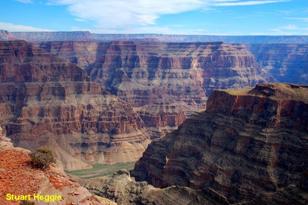Burial and Compaction

Layers of sedimentary rocks in the Grand Canyon, USA.
How do great thicknesses of sedimentary rocks (see photo) build up, and how does the loose sediment get turned into hard rock?As layers are piled one upon another, the sediments beneath are buried, sometimes by hundreds of metres of sediment above. The weight of these layers compacts (squashes down) the sediment grains. Minerals deposited from water in the spaces between the sediment grains gradually cements them together. Compaction and cementation are explained in the next two pages.
The Principle of Superposition:
In a series of rock layers like those in the picture, we see that the layers at the bottom of the canyon must have been deposited first – in other words, they are the oldest rocks, whilst the rocks at the top are the youngest.This “principle of superposition” can often be used to work out the relative ages of different rock layers, but can you think of situations where it might not work?
What if the rocks have been folded, for example?
Burial of Sediments
Compaction and Cementation







